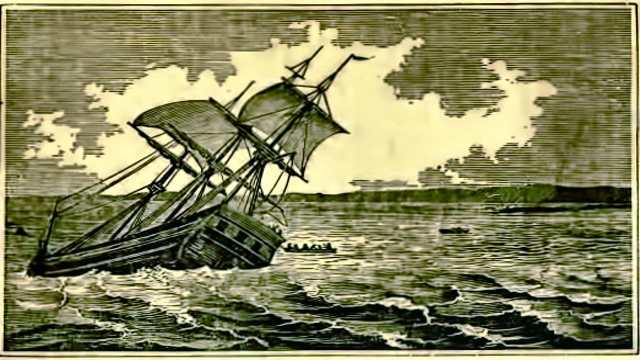The saga of the HMS Bounty’s mutiny is well-known, but the lesser-known tale of HMS Pandora’s pursuit of the mutineers adds a dramatic and tragic chapter to the story. When Lieutenant William Bligh reached the Admiralty in March 1790, he brought news that shook the British Royal Navy.
The outrageous act of mutiny on the Bounty demanded a swift and decisive response. As Europe teetered on the brink of war, and revolution spread from France, the Admiralty faced the dual challenge of preparing for potential conflict while also dealing with the stain of mutiny on its naval honor.
Pandora’s Mission: A Manhunt Begins
Captain Edward Edwards was chosen to command HMS Pandora, a formidable Porcupine-class vessel. Armed with twenty six-pounders and four eighteen-pounder carronades, the Pandora was no ordinary ship. It was equipped for a mission of utmost importance: to capture the mutineers and restore the Navy’s tarnished reputation.
Among the crew was Third Lieutenant Thomas Hayward, who had survived the perilous journey with Bligh after the mutiny.
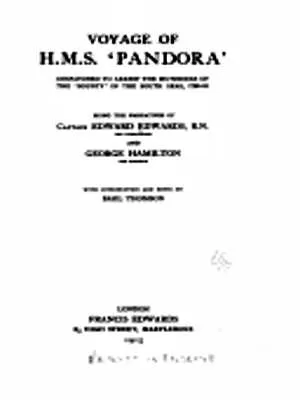
Departing Portsmouth on November 7, 1790, Pandora set sail with orders to hunt down the Bounty mutineers, who had scattered across the South Pacific. The journey took the crew around Cape Horn without incident, and by March 23, 1791, they reached Tahiti, the epicenter of the mutiny.
Swift Capture: Mutineers in Custody
The moment Pandora arrived, Joseph Coleman, the Bounty’s former armorer, presented himself to Edwards. Coleman had dived off the Bounty to escape the mutineers and now sought refuge with the Pandora crew. He recounted the grim tale of Charles Churchill, one of the mutineers, who had been murdered by another crewman, Mathew Thompson, who was then killed by Churchill’s allies.
Peter Heywood, another former Bounty crew member, voluntarily surrendered, expecting clemency. To his dismay, both he and Coleman were deemed “Piratical Villains” and shackled in irons. Over the next few days, Edwards’ men rounded up more mutineers, including Richard Skinner, and captured a small schooner named Resolution, built by the mutineers themselves.
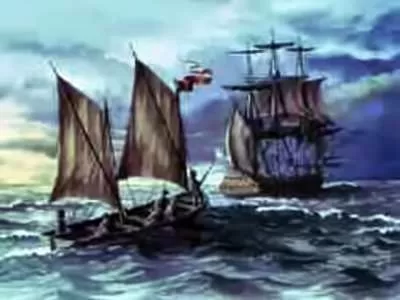
Edwards had a special prison built on Pandora’s quarterdeck, ominously dubbed “Pandora’s Box.” The fourteen prisoners were confined in this cramped, dark space, handcuffed and shackled, with only an eighteen-inch square trapdoor as their link to the outside world. Guards watched them around the clock as the ship set sail on May 8, 1791, with the schooner in tow.
Pursuit: A Fruitless Search
Captain Edwards was determined to find the remaining Bounty mutineers and recover the ship itself. His orders directed him to search the islands of Whytootackee and the Friendly Islands, but his mission was doomed from the start. Pitcairn Island, where the mutineers had settled, was incorrectly charted, and Edwards unknowingly passed it by.
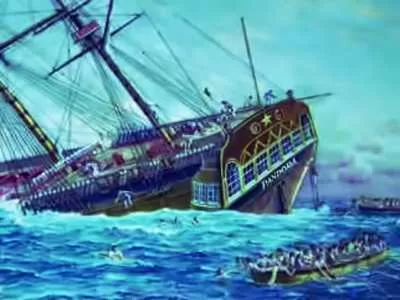
For three long months, the Pandora scoured the islands, chasing rumors and dead ends. The crew’s morale plummeted as the fruitless search dragged on. Two boats with fourteen men were lost, and a landing party was attacked at Anamooka. By August, with the monsoon season looming, Edwards made the fateful decision to return home.
Disaster Strikes: Pandora’s Final Voyage
Navigating the treacherous waters of the Great Barrier Reef, Edwards sought a passage through the Torres Strait. Despite careful precautions, disaster struck on August 29, 1791, when Pandora hit a reef, tearing a gaping hole in her side. Within minutes, the ship began to take on water.
Panic ensued as the crew scrambled to abandon ship. In “Pandora’s Box,” the Bounty prisoners begged for their lives. Coleman, McIntosh, and Nelson, identified by Bligh as innocent, were released to help with the pumps. The trapdoor was bolted shut again as the ship continued to sink.
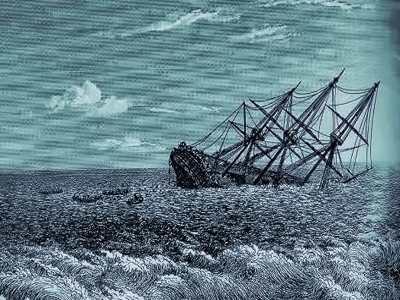
At dawn the next day, Pandora’s armorer, Joseph Hodges, risked his life to enter the Box and strike off the prisoners’ fetters. Some escaped before the ship rolled to port, taking on more water. Boatswain’s mate William Moulter drew back the bolt as he abandoned ship, allowing more prisoners to escape. Tragically, four prisoners drowned alongside thirty-one crew members.
Desperate Journey: Survival Against All Odds
The survivors mustered on a nearby sandbar, but their ordeal was far from over. With no provisions salvaged from the sinking ship, Captain Edwards and his men faced a harrowing journey across the Timor Sea in small open boats. For Thomas Hayward, it was a grim déjà vu—he was now enduring his second open-boat ordeal in as many years.
The men, blistered by the sun and weakened by starvation, were reduced to drinking the blood of seabirds or their own urine. Remarkably, after sixteen grueling days, they reached Coupang, the very destination Bligh had navigated to in the Bounty’s launch. The irony was not lost on the survivors.
Upon arrival, the ten Bounty prisoners were shackled and placed in stocks at the Dutch fort, though a sympathetic officer later moved them to shackles instead. After a period of recovery, the survivors boarded the Rembang, a Dutch East Indiaman bound for Batavia, on Java.
Final Test: Battling the Elements
The Rembang’s voyage was no less perilous. A violent storm off the coast of Flores shredded the sails and sent the Dutch crew fleeing below decks. Edwards and his English crew took charge, managing to save the ship, though the weakened prisoners were unable to man the pumps.
When they finally arrived in Batavia, the crew faced another deadly foe—disease. Malaria swept through the port, claiming fifteen lives from Pandora’s ranks. The survivors departed for home seven weeks later on various Dutch vessels. Edwards and the Bounty prisoners boarded the Vreede burg and eventually transferred to HMS Gorgon at the Cape of Good Hope.
On June 19, 1792, the Gorgon anchored off Spithead, Portsmouth. The Bounty prisoners were moved in chains to the Hector, where they awaited their court-martial. Captain Edward Edwards, like Lieutenant Bligh before him, would face a court-martial for the loss of his ship, adding another chapter to the already complex and tragic tale of the Bounty.
Conclusion: Legacy of Loyalty and Loss
The story of HMS Pandora’s pursuit of the Bounty mutineers is a testament to the perils of naval warfare and the high stakes of loyalty and leadership. Captain Edwards’ determination to bring the mutineers to justice was unwavering, but the mission ended in tragedy. The loss of Pandora and the suffering endured by her crew and prisoners highlight the harsh realities of life at sea during this tumultuous period in history.
While the mutineers of the Bounty are often remembered for their defiance, the story of Pandora serves as a sobering reminder of the price of rebellion and the fragility of human endeavors in the face of nature’s relentless forces.

